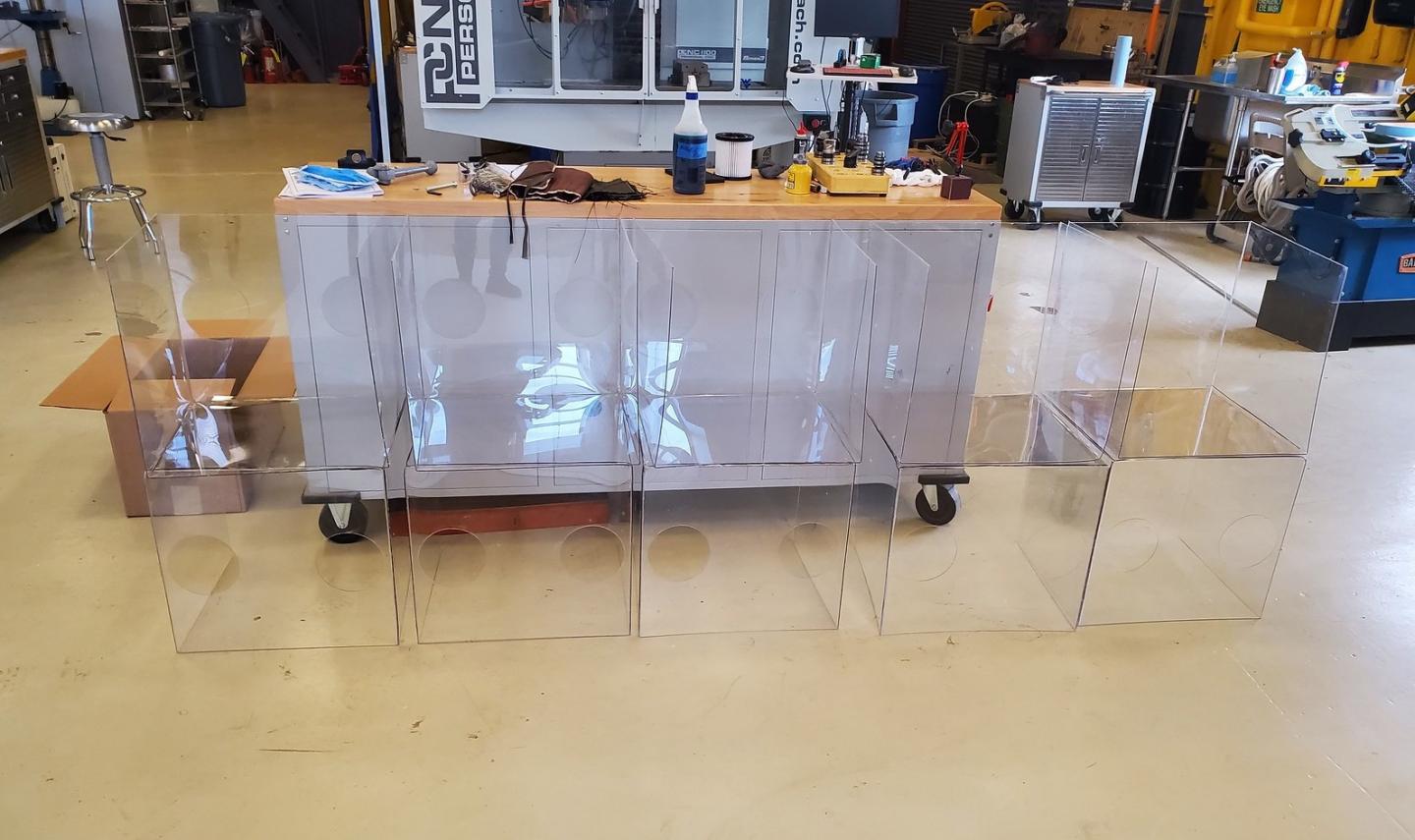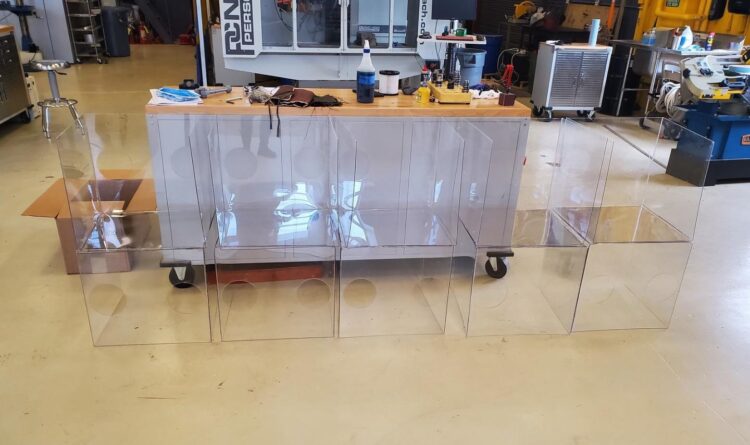
Credit: West Virginia University
A global pandemic, a worried wife and a campus that, like its home state, is full of connections, were the impetus for protective devices that were created at West Virginia University and are now being used by a variety of health care professionals at WVU Medicine J. W. Ruby Memorial Hospital.
Lee Mullet, a teaching assistant professor and interior design program coordinator, fretted about her husband, Dr. Chuck Mullett, chair of the Department of Pediatrics, contracting the highly-contagious Coronavirus. After reading a report about intubation boxes to protect doctors, she forwarded the information to her husband, who knew that Dr. Pavithra Ellison, associate professor of pediatric anesthesiology, had been worried about exposure to the deadly virus, as well.
Physicians are at high risk for exposure to COVID-19 as they intubate patients who need to be put on ventilators, potentially releasing virus-carrying particles, but intubation boxes capture those aerosolized particles; the boxes are also used by anesthesiologists and respiratory therapists, in critical care medicine and the emergency department.
Lee Mullett had toured the Innovation Hub lab at the Benjamin M. Statler College of Engineering and Mineral Resources last year. Instead of just worrying, she acted and reached out to Gene Cilento, the Hub’s inaugural director, during the first days of the University’s shutdown because of the virus. Cilento responded that the Hub would assist.
“The bottom line is that the new Innovation Hub is still coming online but we saw an opportunity to help the medical profession in a critical time of need,” Cilento said. “It is a way to help our WVU medical community do their jobs.”
To begin making prototypes of the transparent boxes, Innovation Hub shop managers Joshua Bintrim and Kelsey Crawford reached out to Jim Hall, a chemical engineering senior lab instrumentation specialist with more than 35 years of experience as a machinist.
The team began by consulting with medical professionals at the WVU School of Medicine to ensure that the final product would be durable, ergonomically comfortable and functional, compatible with sterilizing techniques and perhaps most importantly, provide adequate protection. The design needed to include access ports to allow the physician to perform the intubation and also have a perfect seal to prevent any scrapes or cuts to both medical personnel and patients.
“We had to make it work with the equipment we had, keeping in mind that we needed to get them out the door as quickly as possible,” Hall said.
Bintrim, a shop manager of rapid prototyping workroom with the Benjamin M. Statler College of Engineering and Mineral Resources, built the first model. Using WhatsApp to receive feedback from the doctors in real time, he was able to see how the box was used in simulations and improve upon the model before being finalizing the design, a three-sided, 20-by-20-by-20-inch box with two six-inch diameter holes. He said the virtual meetings allowed the Hub to create only one prototype iteration before production began. Hall estimated that after working through the learning curve, one intubation box takes approximately 30 minutes to make.
“They were perfect–so simple, and yet so effective,” Chuck Mullett said. “We asked for a total of 40 to spread around the hospital for use–the ED, the ORs and the ICUs.”
The boxes were delivered in a week.
“It speaks to me that we can accomplish so many things in such a short period of time when we have a truly collaborative effort,” Ellison said. “I’m fortunate to work with an incredible team of professionals who rise to the occasion. As an anesthesiologist, I am trained to stay calm in chaos and I like to rise up to the challenge. The positive part of this is how we all work together as a team to help protect patients and also all our healthcare personnel.”
The Innovation Hub is now working with the West Virginia VA Hospital System, as well.
###
Media Contact
Cassie Thomas
[email protected]
Original Source
https:/





